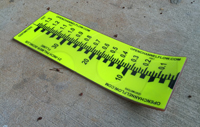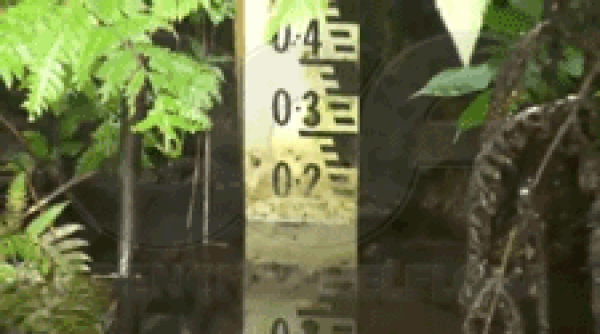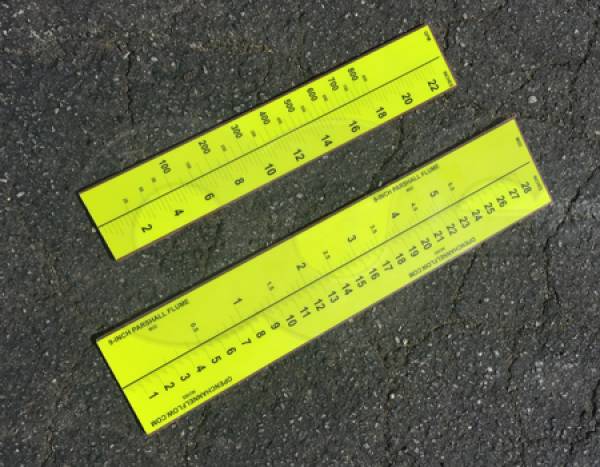This website uses a variety of cookies, which you consent to if you continue to use this site. You can read our Privacy Policy for
details about how these cookies are used, and to grant or withdraw your consent for certain types of cookies.
Replacement Staff Gauges
Over time a primary device’s (flume or weir) staff gauge may need to be replaced. Wear, vandalism, nature of the flow stream, and device construction can all play parts in a gauge needing to be replaced.
 When replacing a gauge there are two styles available: adhesive gauges and mechanically fastened gauges.
When replacing a gauge there are two styles available: adhesive gauges and mechanically fastened gauges.
Adhesive gauges are usually a thin material (direct printed polyester or thin encapsulated fiberglass) that either has a factory applied adhesive on the back or to which an adhesive is applied in the field. Adhesive gauges are relatively low cost and can be applied with a minimum of time / effort.
Adhesive gauges do require that the mounting surface be dry, clean, and smooth for the gauge to adhere properly. Rough or dirty surfaces should be cleaned and smoothed before the gauge is applied. Acetone, mineral spirits, or other non-residue cleaners should be used to prep the surface. Its important that adhesive gauges be smoothed during installation so that no air is trapped under the gauge. Trapped air can eventually lead to the gauge to detach.
Also the edges of the gauge must be well adhered around the entire perimeter of the gauge. Otherwise water can get under the gauge, causing it to lift off and eventually come off.
While they cost more, mechanically fastened gauges don’t require much in the way of surface preparation. These gauges can also be installed when some flow is present or when the surface is wet. Fiberglass encapsulated, stencil cut aluminum/stainless steel, and porcelain enameled iron gauges are all examples of mechanically fastened gauges.
Related Blog Posts
Explore more insights in our blog.

LOCATIONS IN ATLANTA, GA & BOISE, ID




